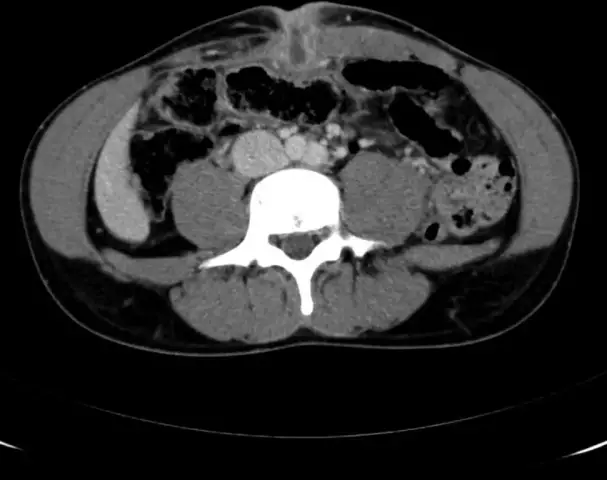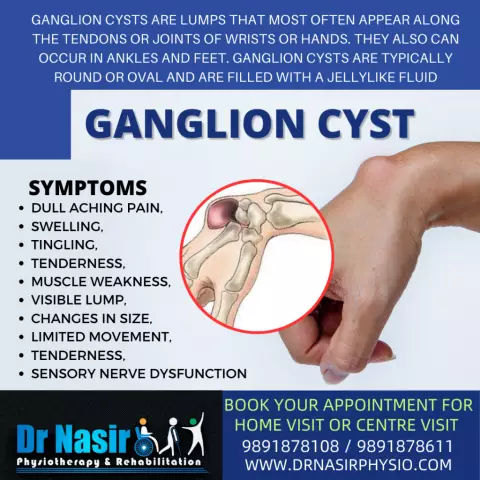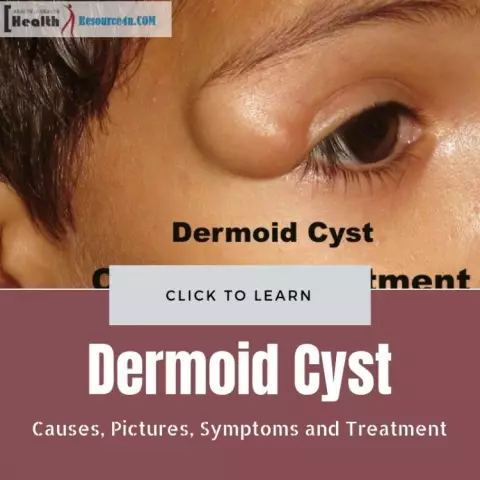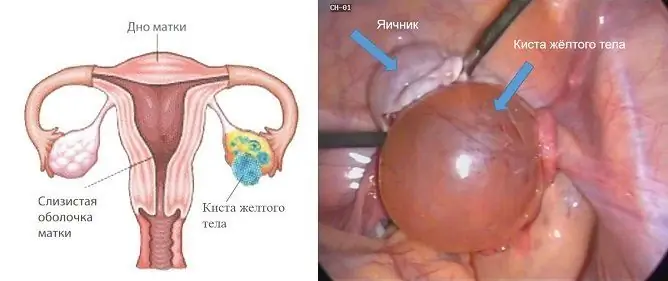- Author Rachel Wainwright [email protected].
- Public 2023-12-15 07:39.
- Last modified 2025-11-02 20:14.
Urachus cyst

The urachus is the urinary duct that connects the baby's bladder with the amniotic fluid during its intrauterine development. At 4-5 months of pregnancy, during the development of the fetus, the urachus, as a rule, overgrows and forms the median umbilical ligament. In newborns and adults, at the site of the urachus, one can see an obliterated noncavity cord moving from the apex of the bladder to the navel, however, in some cases, complete fusion of the organ does not occur, which leads to certain pathologies. These include:
- Umbilical fistula (with non-closure of the part of the urachus closest to the navel). This variant of the anomaly is characterized by regular discharge in the navel area, leading to its irritation;
- Vesico-umbilical fistula (occurs when the urachus is completely incomplete). In this case, there is a constant flow of urine in the navel;
- Urachus cyst. This is a non-closure of the urinary duct, forming in its middle part a cystic formation filled with mucous secretion. The urachus cyst can reach the size of a human fist.
According to statistics, urachus cyst in men is diagnosed 3 times more often than in female patients.
Urachus cyst symptoms
This urological disease is detected with difficulty: clinically, the urachus cyst may not appear for a long time, while maintaining a small size. When the contents of the urachus cyst (meconium, serous fluid, mucus) become infected, suppuration may occur, accompanied by a rise in temperature, painful sensations in the lower abdomen. With a pronounced inflammatory process, symptoms of general intoxication, abdominal pain, hyperemia of the skin under the navel may occur.
A large urachus cyst can appear as a tumor-like formation on palpation of the abdominal wall in the navel. A festering cyst can burst into the abdominal cavity (and cause peritonitis), the bladder (forming a bladder fistula), or through the anterior abdominal wall (forming an umbilical fistula). An umbilical fistula is manifested by periodic discharge of pus from the umbilical opening, increasing when straining or pressing on the umbilical ring area, irritation, skin weeping, as well as the course of omphalitis.
Diagnostics of the urachus cyst

In the process of diagnosis, it is important to distinguish the disease from the umbilical cyst, bladder diverticulum, hernia of the anterior abdominal wall in the presence of similar symptoms with the urachus cyst. For this purpose, the patient is assigned to conduct cystoscopy, cystography, MRI, ultrasound of the bladder, as well as fistulography - a study that allows you to find out whether an ungrown urinary stream has a message with the bladder - produced only after the inflammatory manifestations have subsided.
With suppuration of the urachus cyst, patients are often admitted to the hospital with a symptom of "acute abdomen" - and the correct diagnosis can only be established during the process of laparotomy or laparoscopy.
Urachus cyst treatment
Treatment of the disease - symptomatic non-closure of the urinary duct - is operational, consisting in the removal of the urachus cyst. The operation is characterized by extraperitoneal excision of the formation. In the case of abscess formation, an immediate opening and cleaning of the abscess cavity is performed, then, already in the "cold" period, a standard urachus cyst operation is performed.
With the development of omphalitis or the formation of an umbilical fistula, specialists prescribe a course of conservative therapy (dressings, ultraviolet irradiation, taking antibiotics) and only after the symptoms of inflammation have subsided, surgical intervention is performed.
The information is generalized and provided for informational purposes only. At the first sign of illness, see your doctor. Self-medication is hazardous to health!






